The beautiful Swiss village protected by a colony of rare ibex
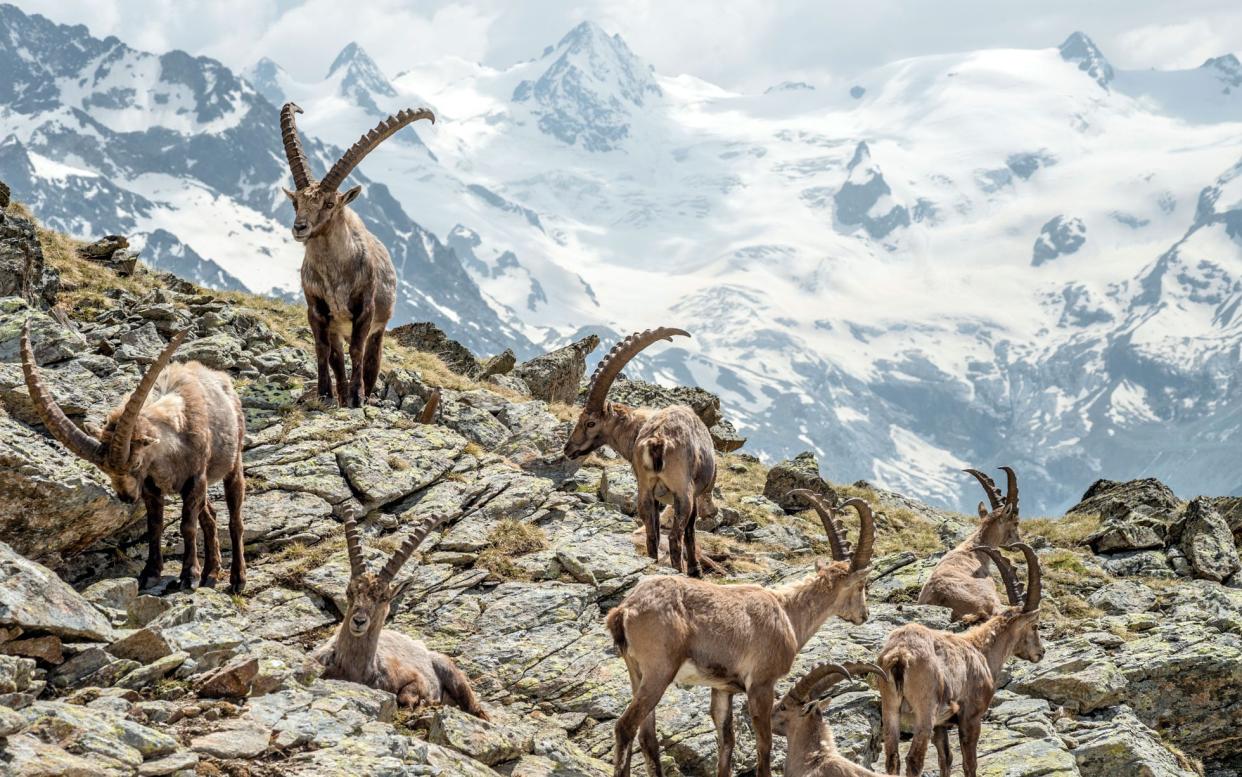
Early-morning mist was draped over little Lake Staz. The gossamer veil added a touch of mystery to a serene summer outlook across gin-clear waters to pine-clad hills and mountains towering behind.
Only some ducks, gliding from the far shore in V formation, disturbed the stillness. I sat on a jetty revelling in the views and the tranquillity, then reluctantly walked on, following a woodland trail that in less than 20 minutes would take me a world away to one of the planet’s ritziest resorts.
Surrounded by a network of footpaths, Lake Staz is something of a hidden jewel in eastern Switzerland’s Upper Engadine valley. From my base at the postcard-pretty village of Pontresina I’d followed one of the well-marked walking routes through an enchanted forest dappled with sunlight and teeming with red squirrels, bullfinches, blue tits and more.
I was heading to St Moritz, partly out of curiosity to take in some of that town’s glitz and glamour, and partly because locals had advised me that this easy walk of an hour or so would make an excellent warm-up to a few days exploring the natural wonders of the area.
After an hour of shameless voyeurism peering through the glossy shop windows in St Moritz, I caught the bus back to Pontresina. Summer roadworks along the alpine highway meant the twisting five-mile drive took almost as long as my walk – and left me with an overriding sense that travel on foot was the expedient way to go.
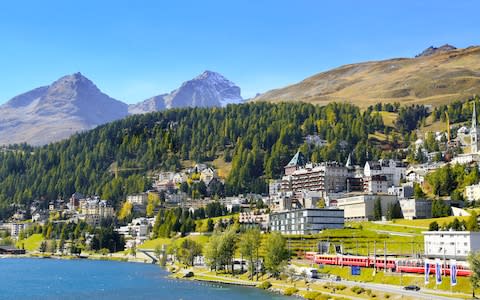
Pontresina is a near-poetic counterpoint to St Moritz. It’s a proper little village, complete with a couple of bakers, several churches and an array of historic Engadine houses that are beautifully decorated with traditional sgraffiti embellishments.
The striking geometric patterns are painted and etched into the plaster around windows and also around typically Engadine wide-arched doorways, which were originally built as entrances that would accommodate farm carts. For, until tourism started gearing up in the mid-19th century, Pontresina and neighbouring St Moritz were extremely rustic – and very poor.
By the 1870s, the Upper Engadine valley had been transformed by the arrival of tourists who came to climb, to walk and, increasingly, to ski. And so it effectively remains today, with visitors enjoying very different summer and winter attractions. Yet while St Moritz is busiest in winter, Pontresina really comes into its own in summer and presents a host of alpine hiking trails.
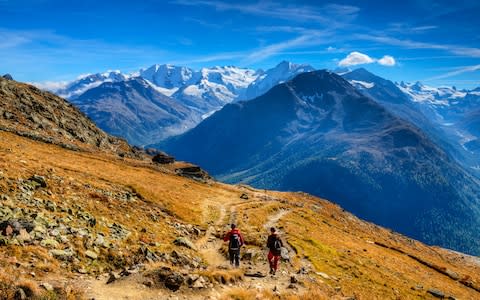
It is principally thanks to a large colony of rare ibex that Pontresina remains very little developed. The slopes immediately behind the village are home to about 1,800 of these magnificently horned mountain goats. For the most part, they remain unseen in high grazing grounds, but in spring, lush new grass in the valley sometimes tempts them almost into the village. Their habitat is carefully protected; there are no pistes here, only trails for summer walking and winter snowshoeing.
These are well signposted, with names given in German and also in Romansh, a modern-day form of Latin that sounds a little like Italian with a musical lisp. Local staff at my hotel patiently took me through the basics – “allegra” for hello, “engraziel” for thank you – and told me that dialects of this ancient language vary tremendously, even within a small area, reflecting how remote villages here used to be.
I was staying at Grand Hotel Kronenhof, a vestige of old-world style that presides splendidly over Pontresina. It is majestically set, looking out to glaciers and mountain peaks, snow-clad even in summer; from the large and dreamily stuccoed lobby the view across Val Roseg is particularly sublime. One of the oldest places to stay in the area, Grand Hotel Kronenhof evolved from a guesthouse set up in 1848.
I was shown its early wood-panelled parlour, a tiny room complete with a wall stove (it’s now an atmospheric private dining room), and its old cellar where the guests’ skiing equipment was stored between winter seasons; vintage wooden skis still line the walls, including a pair identified with a curly, time-worn luggage label as belonging to Elizabeth Davidson, an English guest who left her winter gear here just before the First World War and never returned.
By that stage, the building had morphed into a handsome neo-baroque edifice. It is now something of a world unto itself, with 112 bedrooms, three restaurants (with appealing exclusivity the elegantly frescoed Grand Restaurant is for resident guests only), a dining area for children, a billiards room and even a wood-panelled bowling alley.
There’s also a state-of-the-art spa, which proved a boon on my second morning. Rain had arrived big time – not an entirely unusual occurrence. After all, why else would the valley be so vibrantly green in summer? No matter. I tried the full gamut of float pool, steam room, sauna and whirlpools then headed out to a village concert. In summer at 11am daily, Pontresina stages free performances of classical music. Mostly these are chamber music events that take place in a forest setting outdoors but in wet weather concerts relocate to San Nicolò church.
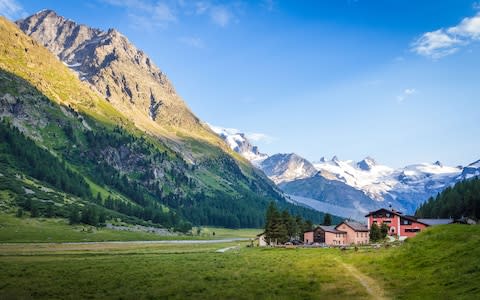
From there, I progressed to Pontresina’s Museum Alpin, set in a especially well-conserved old Engadine house. From displays of local minerals to sections on hunting and mountaineering (including cumbersome tweeds worn in the early 20th century), there’s an absorbing collection. I was particularly struck by an account of the Anglican church that was consecrated here in 1882, such was the impact and influence of the English community in Pontresina. The church thrived for many years but was deconsecrated in the Sixties and replaced more recently by an apartment block.
Of course, when summer sunshine returns, the outdoors is compelling. There’s a network of 360 miles of hiking trails in the Pontresina vicinity. And there are walks to suit all abilities. In addition to the easy-going trail to St Moritz, I enjoyed a picturesque, fairly level walk in Val Roseg, passing moss-draped streams and hearing the sonorous clang of distant cow bells.
For spectacular panoramas, I headed over to the funicular station outside the village and took a thrilling, vertiginous ride up to Muottas Muragl. At an altitude of 8,000ft, the viewing terrace here offers a terrific outlook over the lakes of St Moritz; on a clear day you can gaze all the way to Italy. There’s an idyllic five-and-a-half-mile walk east from this dramatic point. Flanked on one side by the peaks of the Bernina mountain range, you pass a handy chalet restaurant and finish at Alp Languard, where cable cars take you down to Pontresina.
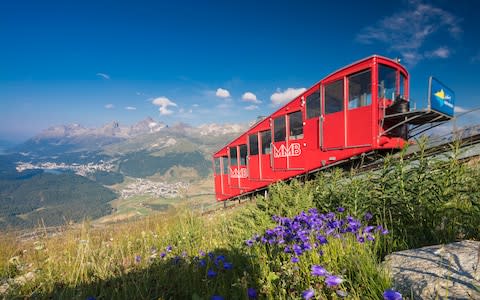
On my last morning, I explored one of the region’s biggest glaciers. From Pontresina you can catch a train to Morteratsch station, a journey of just 10 minutes. Stride out from there and you reach Morteratsch glacier after an easy, 50-minute walk. Posts along the way provide absorbing details about the landscape, the glacier rumbles and the ice melt. It’s a there-and-back hike; having trodden briefly on the milky ice, you turn tail.
“Don’t miss the cheese at the end of the trail,” I’d been told by a fellow walker. So I followed signs just beyond the station to Alp Schaukäserei, a rustic restaurant where traditional Swiss alpine cheese is made – you can watch production twice a day and help to stir a cauldron filled with milk brought from high summer pastures. It’s a family operation, run from Sennerei delicatessen in Pontresina.
Back in the village, I rounded off dinner that evening with a sliver of their Mutschli cheese. It had a nutty aroma and a mildly piquant, tangy flavour – all of which offered, I thought, more than a hint of the Engadine valley’s glorious gentian-filled meadows and its pure alpine air.
Essentials
Swiss (swiss.com) flies to Zurich from Heathrow, London City, Manchester and Birmingham airports. From Zurich it is about three and a half hours by train to Pontresina; tickets from Switzerland Travel Centre (swisstravelsystem.co.uk).
Double rooms at Grand Hotel Kronenhof (kronenhof.com) in Pontresina cost from CHF445 (£354) per night half-board for two people sharing. This includes transfers to and from the station and use of the hotel spa.
More information: Switzerland Tourism (00800 100 200 29; myswitzerland.com).

 Yahoo News
Yahoo News 